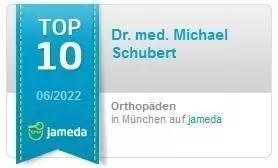
Not only the back pain from the area of the lumbar spine, which is particularly often the focus, but also the cervical spine is susceptible to painful functional disorders with sometimes very stressful neck pain . However, statistics show that sufferers generally seek medical attention much later than people with lower back problems. However, fears are unfounded: modern procedures now allow successful treatment that eliminates pain and maintains mobility. However, the prerequisite is that the (surgical) treatment is carried out by an experienced specialist.
In addition to long-term consequences of injuries (e.g. "whiplash" as a result of a car accident), it is primarily signs of wear and tear on the bony elements of the cervical spine or on the intervertebral discs between the individual cervical vertebrae that cause problems. Chronic poor posture or overloading due to professional or sporting demands can mean that even in younger people the natural compensation mechanisms are exceeded and the strained intervertebral disc can no longer withstand the high pressure. For example, a bulging or herniated disc can develop as a result of degeneration or tearing of the connective tissue disc fiber ring. The aging spine, on the other hand, tends to show signs of wear and tear in the small vertebral joints (facet joints), with new bone formation occurring as the process progresses. Similar to a herniated disc, these attachments can lead to compression of a nerve root at the exit point between two cervical vertebrae, but also to a narrowing of the spinal cord canal (spinal stenosis) or a loosening of the vertebral connections and thus to instability of the spine. To the point of paralysis.
Read the complete article from Campaign for Healthy Backs No. 48 (2012) as a PDF:
